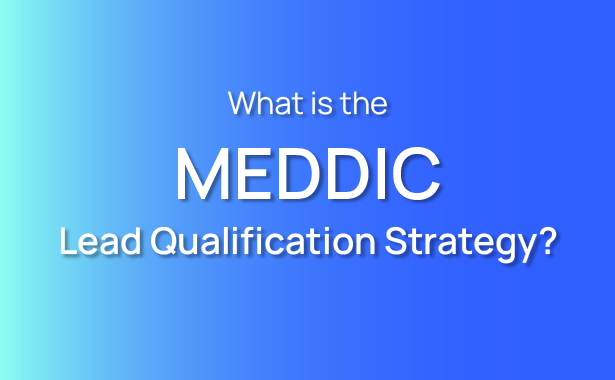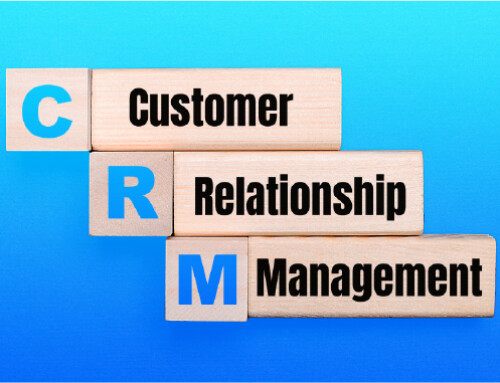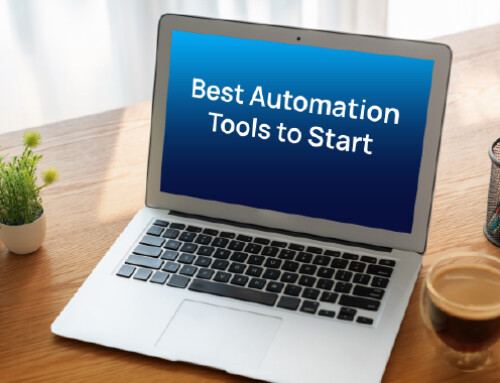Contents
Do you keep failing to close sales? Despite what some people might tell you, the problem may not be your salesmanship or your pitch—it could be the customers you’re selling to. The MEDDIC sales process helps you know and qualify your audience. You’ll know you’re selling to the right people in the right way, making it easier to close sales. This article will show you how.
What is the MEDDIC qualification strategy? The acronym stands for Market, Economic, Distribution, Direct/Indirect Competition and Characteristics. It’s a framework that provides a set of rules-based guidelines to help salespeople qualify opportunities. The MEDDIC qualification strategy was developed by Atos Origin (then called EDS), now part of DXC Technology.
MEDDIC is a framework for qualifying opportunities, and the MEDDIC qualification strategy is a rules-based framework that gives your sales reps a playbook for qualifying opportunities.
It’s based on four criteria: Mission, Environment, Demands and Constraints (MED). You can use these criteria to assess how well an opportunity fits with your company’s mission and what you need from it in terms of resources (money or people).
Definition
MEDDIC is an acronym for the five key elements of a sales opportunity. If you’re not familiar with MEDDIC, it stands for Market, Economic Buyer, Decision Maker, Direct Access and Competitor (or Opportunity). The good news is that your reps don’t need to remember this acronym because they’ll have all the information they need in one place.
The MEDDIC qualification strategy can be thought of as a rules-based framework that gives your sales reps a playbook for qualifying opportunities. It’s based on data from your company and past experiences selling to customers similar to them. The goal is to help reps focus their time on opportunities that are most likely to turn into revenue-generating deals by eliminating ones that aren’t worth pursuing further based on the MEDDIC parameters.
Why Should You Use MEDDIC?
The MEDDIC sales qualification framework helps you properly identify and qualify your prospects. With better-qualified customers, your sales organization can see higher close rates and greater success.
Moreover, if your business sells highly-technical or complex products, expensive products, or products that require a notable shift in user behavior, MEDDIC is a valuable framework to use. By using MEDDIC to thoroughly evaluate and qualify your prospective customers early in the sales process, your sales team can dedicate their valuable resources to customers who are the most likely to close.
Take it from Brian Halligan, who worked at PTC before founding HubSpot: “From $0 to $100 million, PTC was successful because we sold a better widget. From $100 million to $1 billion, however, we sold a shift in technology. MEDDIC became important because it’s not just any old purchase — it’s a transformation of the business.”
Lastly, MEDDIC is a straightforward sales qualification framework. It serves as a checklist of information to obtain, not a laundry list of sales tricks or “best practices” to try out until one sticks. For this reason, MEDDIC can be taught and mastered by even the most novice salespeople.
Where MEDDIC can get complicated is not in its execution but in preparing your sales team to seek the right information according to your buyer personas.
Your sales qualification process can only operate as well as you’ve prepared your target buyer information, meaning that if you don’t know the ins and outs of your buyer persona, you won’t know what questions to ask during the MEDDIC process.
MEDDIC Qualification Strategy Rules
The MEDDIC Qualification Strategy gives your sales reps a playbook for qualifying opportunities. It works in any industry, for any product or service, for any company size. There are five steps:
- Meet with the customer (or prospect) to understand their strategic goals and key decision-making criteria
- Evaluate the opportunity based on those criteria and your company’s capabilities
- Deliver insights about the customer’s environment that help you understand their needs and expectations
- Define an approach that will help you win more business from this customer
- Create a proposal that will win them over
How to Use the MEDDIC Qualification Strategy
If you’re looking for a way to help your sales team determine whether a prospect is a good fit, or if you’re trying to figure out how to move forward with an exciting new opportunity, the MEDDIC Qualification Strategy can be useful.
This framework is based on four principles:
- Meet with the decision maker (D) who will make the buying decision and clarify what he or she needs from your product or service. You’ll use this information to identify other players in the decision-making process (M), such as influencers who may affect whether they buy from you.
- Determine if there are any obstacles between your company and closing a deal. In some cases, this means identifying what challenges exist within internal processes—for instance, if there’s no budget set aside for training programs right now but that would need to happen before anyone could start using what you offer. In other cases, it might mean identifying external factors—like competitors pricing aggressively in order to drive down demand for your products or services in general so they can win customers away from you by undercutting prices even more aggressively than before—that could prevent someone from making any kind of purchase at all without remedying those problems first.
- Clearly define success criteria so everyone knows what victory looks like when we get there: Is our goal simply getting someone interested enough about what we have? Did we actually sell something? Or did we meet certain benchmarks within specific time frames (e.g., “make 50% more revenue than last year”)?
Where MEDDIC Works and Doesn’t Work
MEDDIC works best in large, complex sales cycles. That’s not to say it won’t work for small sales cycles or simple ones, but you should be aware that you may need to adjust your strategy accordingly. If you have the luxury of time and resources—the ability to make a lot of data points available or spend more time on your MEDDIC analysis—then MEDDIC will provide great results.
On the other hand, if you have a smaller budget and time constraints (or if you’re working with an early-stage startup), then there are other methods that may work better for you. In these cases, we recommend using a method like [this](https://www.customerblissapp.com/blog/what-is-the-meddic-qualification/) one instead.
Your Playbook — MEDDIC Qualification in 6 Steps
As defined above, MEDDIC has six main qualification steps.
1. Metrics
Discover what quantifiable goals your prospect hopes to achieve. Establishing these metrics allows you to describe the benefit of your solution as it specifically pertains to your prospect.
For example, your prospect tells you they want to drive 100,000 new monthly visitors to their website (versus the vague goal of “more traffic”).
Understanding that this metric matters so much to your prospect enables you to customize the economic benefit of your product or service in a way that relates to their business goals.
Questions to ask
- What goals are you hoping to achieve?
- How would you measure success?
2. Economic Buyer
Find out who has the power to spend the appropriate budget. Who makes the financial decisions as they pertain to the solution you’re selling? This person may not be the point of contact you’ve established at the company, but they’re important nonetheless as they have sway over if your deal closes.
Get in touch with the economic buyer if possible. If you can’t speak directly to them, work with your point of contact to understand their mindset, expectations, priorities, and decision-making process so that you can appeal your pitch to their motivations.
Questions to ask
- What does success look like for you?
- Is anyone else involved in the final decision?
3. Decision Criteria
Understand how your prospect’s company makes decisions about purchases similar to your solution. They’re likely comparing many different vendor choices and are weighing their options based on a few important factors — their decision criteria.
Depending on your solution (i.e. if you’re selling a software product), prospective companies could be examining and comparing criteria like ease of use, onboarding and integration, the price versus budget, and potential ROI. Get a clear answer on what you’re prospect is looking at so you can tailor your pitch to highlight these criteria.
Questions to ask
- What are the most important criteria for you when making this decision?
- How might you justify this purchase?
4. Decision Process
In addition to the decision criteria, you must also understand your prospect’s decision process— the internal steps followed to actually finalize a decision. Once you get familiar with this process, you can follow along and ensure your sale doesn’t fall to the wayside or hit an ambiguous roadblock.
Ask your point of contact to walk you through the typical process. Understand who’s involved in meetings to discuss the decision, what paperwork is required, and what types of approval processes need to happen to close the deal.
Questions to ask
- Who do you need to talk to finalize this decision?
- What kind of paperwork needs to get pushed through?
5. Identify Pain
It’s impossible to explain the value of your solution if you don’t know what problems your prospect is trying to solve. Identify the pain points your prospect is facing before you tailor your pitch to explain how your product or service can alleviate that pain.
Just as you gathered quantifiable metrics around your prospect’s goals, ask your prospect to be just as specific about their pains and problems. For example, if your prospect is “struggling to drive website traffic,” dig deeper to uncover just how much traffic they’re missing or how many potential conversions they lose from that traffic. These numbers can help you tailor your pitch to be the most helpful and poignant solution.
Questions to ask
- How does [problem] affect your business and bottom line?
- What happens if you do nothing?
6. Champion
Your champion is someone inside your prospect’s company — your point of contact or perhaps the person who’d benefit the most from your solution — who advocates for you to be decision-makers and the economic buyer.
This person is important to keeping your solution top-of-mind and maintaining interest among the folks who can finalize the sale, especially if your solution is a big-ticket item. Be mindful of who you choose to be your champion; their respect and influence (or lack thereof) can influence your sale.
Questions to ask
- What is this person’s interest in your product or solution?
- Can they accurately explain the product’s benefits as they relate to the company?
To implement MEDDIC, first, train your sales team on your buyer personas. Once they understand how your product or service relates to the ideal customer, encourage them to start applying the MEDDIC framework to sales calls and documenting the conversations. The specific questions will vary depending on the prospect, but the themes should remain the same.
To somewhat automate this process, consider creating templates for discovery calls in your CRM. This can serve as a guide for salespeople still getting comfortable with the MEDDIC process.
MEDDIC equips your sales team to truly understand and properly qualify your customers. This allows them to spend more time on deals that are likely to close — and boosts sales success and morale in the process.
What is the MEDDIC sales process?
The MEDDIC sales process is a B2B sales methodology first developed in the 1990s. This process emphasizes better customer qualification—in other words, determining whether or not you should expend effort getting a customer into your sales funnel. Advocates of the MEDDIC sales methodology argue that pitching to better-qualified customers results in a higher closing rate, thereby increasing sales success.
MEDDIC is an acronym that stands for Metrics, Economic Buyer, Decision criteria, Decision process, Identity pain, and Champion—the six concurrent steps used to qualify customers in the MEDDIC sales process.
Metrics
First, find out what the customer hopes to gain from your solution. These gains should be quantifiable. For example, the company may want to increase their output by a factor of four, might want to get products to market in half the time, or may want to save at least 20% on production costs.
These metrics enable you to describe the economic benefits of your solution. Once you know what metrics the customer cares about, you can prove how your solution provides a good return on investment (ROI). If you justify your solution from an economic standpoint, you’ll be one step closer to closing your sale.
Economic buyer
You need to know who functions as the company’s economic buyer, or the person who actually has the power to make decisions and authorize spending. Often, you should be talking to someone higher up in the company than your current contact. Knowing the economic buyer and their mindset will help you close sales as the buyer’s veto power makes them the one person who absolutely must be convinced.
If at all possible, talk directly to the economic buyer to learn about their expectations, personal metrics, and decision-making process. In some cases, talking will not be possible, in which case you should try to get this information about the economic buyer from your contact. Use this information to make the sale palatable to the buyer, even if they will not be directly affected by it.
Decision criteria
You also need to understand what criteria the company uses in making decisions. Companies are often presented with multiple solutions from different sources, forcing them to compare and make a choice. If you understand how they make this choice, you can better tailor your messaging.
Criteria vary, but often companies use factors like simplicity of use, integration, budget constraints, and potential ROI to make their decisions. If the company does not already have formally defined decision criteria, you can urge them to put it to paper. This step lets you prove that you can meet all their criteria, in turn showing that there’s no reason they shouldn’t agree to a sale.
Decision process
While the decision criteria tell you what goes into a company’s decision, the decision process tells you how that decision is actually made and followed through on. A decision process will include the person who makes a decision, the timeline they operate on, and any formal approval processes in place.
When you know the decision process, you are much less likely to lose a sale due to stagnation. You know exactly what needs to take place on the company’s side to close the sale, so you can work to meet those conditions. If, for example, you know that the economic buyer has okayed the decision but has not completed the follow-up process paperwork, you can specifically push to get that paperwork taken care of, thereby closing the sale.
Identify pain
A customer must have a need before they pursue a solution, and it’s vital to know what that need is or what is causing them pain. This pain can manifest in many ways, including high costs, slow production, and low revenue. Identify the pain the customer is experiencing, and then identify how your solution can relieve that pain. What will happen if they don’t decide on a solution or if they make a bad decision? And how will your solution fix it?
Get as specific as possible about the customer’s pain. For example, knowing the customer loses money because of slow production is important, but it’s too vague or abstract to be useful. On the other hand, if you know they lose $300,000 each month because their production process is only half as fast as it needs to be, you can pitch your solution in a specific and compelling way.
Champion
Find a champion—someone on the inside who is invested in your success and pushes for you. The champion will likely be the individual most affected by the company’s pain or the person who stands to benefit the most from your solution. Because they want your solution, they want you to be successful and will use their influence to sell the solution from the inside.
Your champion does not necessarily have to be in a managerial or other supervisory position, but they do need to be well-respected. Having an employee known for being lazy and selfish advocate for you might not be in your best interest. But having an employee with influence and respect in your corner can make a world of difference in helping you close that sale.
Why use the MEDDIC sales methodology?
The MEDDIC sales process serves as a simple checklist for your sale. It ensures you have all the information you need, and the simple acronym makes it easy to remember if there’s anything else you need to learn. Because the MEDDIC sales process relies on attaining knowledge rather than using sales tricks, it’s easy to implement even for individuals who don’t consider themselves particularly “salesy.”
Moreover, the MEDDIC sales approach gives you the information you need to accurately qualify your leads. As you learn more about your customer, you’ll know whether they’re a worthwhile investment of your time. This approach, in turn, will help you more accurately forecast your sales as you won’t be wasting time keeping unwinnable leads in your sales funnel.
How to begin implementing the MEDDIC sales approach
As you can see from the steps above, the MEDDIC sales process gives clear direction on how to learn more about your potential customers and convince them of your product or service’s value. But how can you encourage your reps to start using this process?
First, visualize the process—not just the basic steps of MEDDIC but how these steps look specifically for your business. This step might involve building a flowchart that shows which collateral to use at every stage or conversation trees that help reps identify champions and pain points.
Second, have your sales reps document discovery calls and other customer interactions by the MEDDIC steps to ensure that they work through the whole MEDDIC process. For example, you can create fields in RunSensible for each step or create a template for the next time.
When you qualify and truly know your customers, your sales team will be able to spend their time on the deals most likely to succeed and find the value that will push that deal over the finish line.
MEDDIC Qualification on Overdrive
The MEDDIC Qualification Strategy is an effective tool for sales reps to use when qualifying opportunities. The rules are clear and simple, which makes them easy to follow. This strategy works best in situations where there are clear criteria that can be assessed easily by sales reps. It’s not ideal for all sales situations, but it’s worth considering as part of your qualification strategy if you have a big enough budget or if you want to simplify things for your sales reps.
Disclaimer: The content provided on this blog is for informational purposes only and does not constitute legal, financial, or professional advice.






